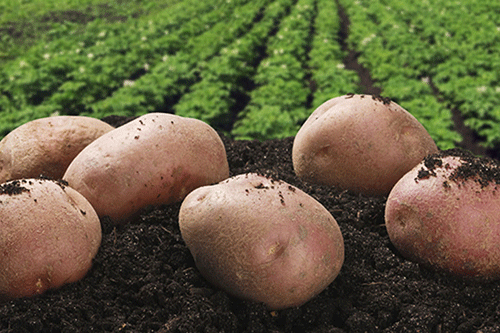Namibia is expected to produce a very low tonnage of potatoes this year, failing to meet higher domestic demand. This is according to figures shared by the Namibia Agronomic Board in its April to August 2023 vegetable production forecast report.
Moreover, the Agricultural Bank of Namibia (Agribank) has stated potatoes remain a highly demanded produce, and farmers should be encouraged to grow more local potatoes to meet the increasing local demand. As per the report, the domestic market is expected to produce 3 885 tonnes, while the demand is at 17 841 tonnes, resulting in a shortage of 13 956 tonnes. Other produce expected to be in shortage includes butternut with 740 tonnes, cabbage with 268 tonnes, gem squash with 203 tonnes, pumpkins with 187 tonnes and only onions will be in surplus with 2 614 tonnes by August 2023.
“No crisis should go to waste. The ban on poultry importation and the low supply of potatoes should be an alarming opportunity for farmers to strengthen the supply of such products and increase their revenue streams,” advised Agribank in its monthly market watch for April 2023. The bank noted the agriculture sector continues to be affected by various factors, such as high input costs and little rainfall. However, added growth stability can be achieved through early drought support, diversification and climate-resilient measures in the sector. The agriculture sector is the backbone of the Namibian economy, and the sector has over the years been one of the main drivers contributing to the national economy significantly.
The sector continued to be the main engine of the economy due to its nature of creating sources of income, supporting the livelihoods of the majority of its people, food security, foreign earnings and provision of raw materials to the manufacturing sector.
Inflation
According to the Namibia Statistics Agency inflation report for April 2023, Namibia inflation remains stubbornly high, recording 6.1% in April 2023, compared to 5.6% in April 2022, adding more financial pressure on the already-ailing consumers.
Food and non-alcoholic beverages, which accounts for 16.5% of the Namibia consumer price index basket, registered a year-on-year inflation rate of 13.5% during the period under review, compared to 5.7% obtained during the corresponding period of 2022.
On a monthly basis, price levels for this category increased by 0.5% during April 2023, compared to 0.9% recorded during the preceding month.
“The price levels of vegetables rose by 15.2% during the period under review up from an annual inflation rate of 3.9% recorded during April 2022.
The increase in the annual inflation rate for this subcategory was mainly observed in the price levels of cucumber from -27% to 44.7%, green pepper/paprika from 9.1% to 52.8%, cabbage from -19.6% to 19.7% and onion from 6% to 26%. Furthermore, the Electricity Control Board (ECB) heaped more pain on consumers when they announced an increase in bulk electricity tariffs by 8.97% from N$1.8222 to N$1.9856 per kilowatt-hour (kWh) for the 2023/24 period as of 1 July 2023. “A potential spillover is expected on farmers who use powered irrigation systems, machinery and other farm equipment. It’s becoming increasingly important for farmers to install and use renewable resources, such as solar, to save and retain their farming income,” advised the bank.
– mndjavera@nepc.com.na


